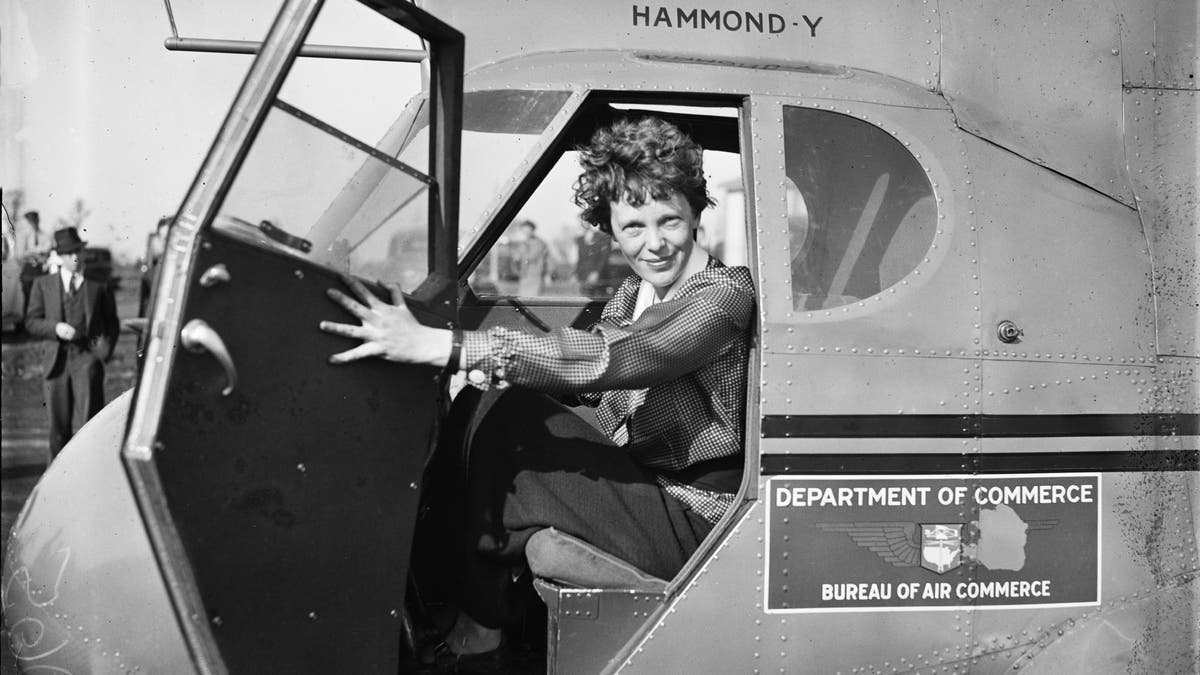
Amelia Earhart was the first woman to fly solo across the Atlantic. (Credit: Library of Congress)
Legendary aviator Amelia Earhart was attempting to become the first female pilot to fly around the world when her plane disappeared over the Pacific Ocean in 1937.
Last month, the International Group for Historic Aircraft Recovery (TIGHAR) proposed the theory that she landed her plane safely on a remote island and died as a castaway.
Now, scientists say a new discovery shows a striking similarity between the pilot and the partial skeleton of a castaway found on an island in the country of Kiribati in 1940.
A historical photo provided the vital clue.
The legendary pilot
In May 1932, Amelia Earhart became the first woman to fly solo across the Atlantic Ocean, taking off in Canada and landing in Ireland.
Three years later, she flew solo from Hawaii to California, winning a $10,000 prize.
She was America’s darling, famous for being a daring, but modest, pilot.
SCIENTISTS TO STUDY STRANGE STAR FOR SIGNS OF LIFE
Together with co-pilot Frederick J. Noonan, she was attempting to circumnavigate the globe when the plane disappeared somewhere near Howland Island, in the middle of the Pacific.
In August, TIGHAR’s Ric Gillespie said Earhart made more than 100 radio transmissions calling for help between July 2 and July 6 of 1937, ruling out the possibility of a crash landing.
Her calls were picked up as far away as Texas, Florida, and even Melbourne.
“She’s out there calling for help,” Mr Gillespie said, adding that she must have landed safely, because the radio wouldn’t have worked without the engine running.
A strange detail
The bones were uncovered on the island of Nikumaroro, also known as Gardner Island, which is about 400 miles south of Howland Island.
They were analysed in 1940, but a doctor said they were male, ruling out the possibility they belonged to Earhart.
However, when TIGHAR discovered the files in 1998, scientists said modern techniques proved the bones were “consistent with a female of Earhart’s height and ethnic origin”.
INCREDIBLE IMAGES OFFER FIRST GLIMPSE OF SUNKEN WWII-ERA AIRCRAFT CARRIER
More recently, anthropologist Richard Jantz was preparing an updated evaluation when he noticed a strange detail: the skeleton’s forearms were considerably larger than average.
However, without knowing the dimensions of Earhart’s body, Dr Jantz had no way of comparing if her forearms were similarly longer than normal.
The fascinating science
TIGHAR turned to forensic imaging specialist Jeff Glickman for help.
Using a historical photo where both of Earhart’s bare arms were visible, he calculated the ratio between the bones in her lower and upper arm.
“Because there is tissue over the skeleton in living people ... the location of each bone end must be estimated,” he wrote in a report published last week.
Her clothing also added a layer of difficulty, however, he used the point of her shoulder, the crease of her elbow, and the indent of her wrist as landmarks.
SUNKEN AMERICAN WWII TORPEDO BOMBER DISCOVERED IN PACIFIC
“Given the evidence and my experience in the field of photogrammetry and photo interpretation, I estimate that the radius-to-humerus ratio of Amelia Earhart is 0.76,” he wrote.
In other words, the difference between her lower and upper arm was virtually identical to the partial skeleton, unearthed in the South Pacific.
The discovery doesn’t conclusively prove the castaway was Amelia Earhart, but it’s certainly another step in that direction.



















